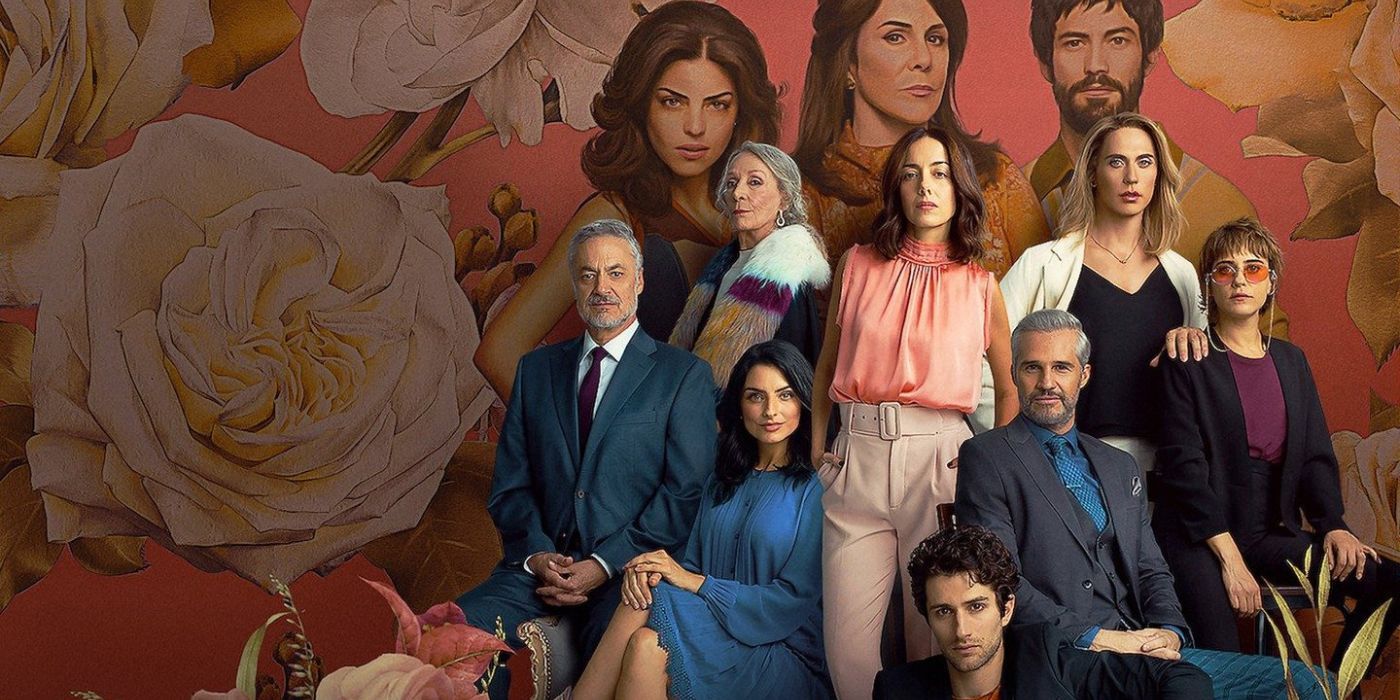👉Full movie at end of the post
The House of Flowers begins as the seemingly perfect De la Mora family celebrates a birthday in their prestigious flower shop. But chaos erupts when a mistress of the patriarch hangs herself during the party, revealing a long-hidden secret: he had a second family and a secret cabaret also named “La Casa de las Flores.” This explosive moment shatters the illusion of perfection and sets the tone for a show that constantly challenges appearances, hypocrisy, and moral double standards in upper-class Mexican society.

At its core, the series explores family dysfunction, identity, and reinvention. Each family member is forced to confront personal and societal expectations. Paulina, the eldest daughter, becomes the reluctant matriarch—resolute, dry-witted, and fiercely loyal. Julián struggles with his bisexuality and self-worth. Elena grapples with cultural identity, career ambitions, and emotional detachment. And behind it all is Virginia De la Mora, the glamorous but controlling mother (played iconically by Verónica Castro in Season 1), whose legacy looms even after her departure.
One of the show's most notable aspects is its bold LGBTQ+ representation. Through Paulina’s trans partner María José (played by Paco León), the series openly addresses themes of gender identity, queer parenthood, and social acceptance in a country where such topics remain taboo. Instead of relegating these characters to side roles, the show places them front and center, treating their narratives with emotional depth and complexity—without losing its playful and theatrical tone.

Stylistically, The House of Flowers blends camp and telenovela tropes with a modern, self-aware sensibility. Its use of vivid colors, dramatic zoom-ins, and ironic musical cues both homage and parody traditional Latin American soap operas. Yet beneath the comedy lies genuine social critique: the show tackles racism, homophobia, classism, and generational trauma, often revealing how oppressive systems operate under the guise of tradition and respectability.

Across its three seasons (and a prequel special), The House of Flowers evolves from a satire into a layered family saga. It dares to confront pain, secrets, and transformation, ultimately suggesting that families—however unconventional—can redefine themselves. The show became a cult hit not just for its style and humor, but for its ability to merge outrageous storytelling with moments of real heart. In the end, it’s a celebration of chosen family, authenticity, and the resilience required to bloom—even in the most twisted of gardens.



